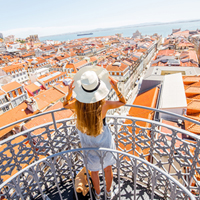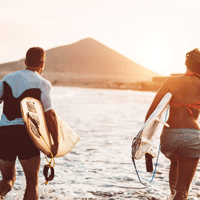Moving to Jarabacoa, the Dominican Republic
Last updated on Sep 28, 2024
Summary: Moving to Jarabacoa, Dominican Rep? Expats talk about what you need to know before moving to Jarabacoa.
What do I need to know before moving to Jarabacoa?
When we asked people what advice they would give someone preparing to move to Jarabacoa, they said:
"Jarabacoa, located in the Dominican Republic, is known for its pleasant climate, beautiful landscapes, and outdoor activities, making it a popular destination for expats. Before moving to Jarabacoa, it's important to understand that while Spanish is the official language, English is also widely spoken, especially in tourist areas and among younger generations. The cost of living in Jarabacoa is relatively low compared to many Western countries, but it's still higher than in other parts of the Dominican Republic. Healthcare in Jarabacoa is adequate for minor illnesses and injuries, but for serious conditions, you may need to travel to larger cities like Santiago or Santo Domingo. Public transportation in Jarabacoa is available but not always reliable, so having a personal vehicle can be beneficial. The local cuisine is a blend of Spanish, African, and Taino influences, with dishes featuring rice, beans, meat, and tropical fruits. Jarabacoa has a tropical rainforest climate, with warm temperatures year-round and a significant amount of rainfall, especially during the summer months. The city is known for its outdoor activities, including hiking, mountain biking, and white-water rafting, so it's a great place for those who love nature and adventure. While Jarabacoa is generally safe, like any place, it's important to take precautions, such as avoiding isolated areas at night and not displaying valuable possessions in public. The Dominican Republic has a different electrical system than the US and many European countries, so you may need to bring or buy adapters for your electronic devices. Finally, it's important to understand and respect the local culture and customs, which include a laid-back lifestyle, a strong sense of community, and a love for music and dance," explained one expat living in Jarabacoa, the Dominican Republic.
How do I find a place to live in Jarabacoa?
We asked expats how they chose their neighborhood and found a place to live. They answered:
"Finding a place to live in Jarabacoa, Dominican Republic involves several steps. First, you need to determine your budget and the type of accommodation you're looking for. This could range from a small apartment to a larger house, depending on your needs and financial capability. Next, you should research the different neighborhoods in Jarabacoa to find one that suits your lifestyle and preferences. Some areas might be closer to amenities like shops, restaurants, and schools, while others might offer more peace and quiet. Once you have a clear idea of what you're looking for, you can start your search. There are several online real estate platforms that list properties for rent or sale in Jarabacoa, such as Point2Homes, Realtor.com, and Airbnb for short-term rentals. These websites allow you to filter your search based on your preferences, such as the number of bedrooms, price range, and location. In addition to online searches, you can also contact local real estate agents who can help you find a place to live. They have extensive knowledge of the local market and can provide you with options that match your criteria. Visiting Jarabacoa in person is also a good idea if possible. This allows you to explore the area, visit potential homes, and get a feel for the community. You can also check out local bulletin boards or newspapers for rental or sale listings. Once you've found a potential place, make sure to inspect it thoroughly. Check the condition of the property, ask about any additional costs such as utilities or maintenance fees, and understand the terms of the lease or sale agreement. Finally, once you're satisfied with a place, you can proceed with the necessary paperwork to secure your new home in Jarabacoa. This might involve providing references, paying a deposit, and signing a lease or sale agreement. It's recommended to seek legal advice to ensure that all the paperwork is in order," remarked one expat who made the move to Jarabacoa.
What is a typical expat home or apartment like in Jarabacoa?
"A typical expat home or apartment in Jarabacoa, Dominican Republic, is often spacious and comfortable, designed to accommodate the tropical climate. These homes usually have large windows to allow for natural light and air circulation. They are often built with high ceilings and tiled floors, which help keep the interiors cool. The architecture often reflects a blend of local and modern styles, with some homes featuring wooden accents and others boasting sleek, contemporary designs. Most expat homes in Jarabacoa come with a fully equipped kitchen, modern bathrooms, and comfortable bedrooms. They often have a balcony or a patio, offering stunning views of the surrounding mountains and green landscapes. Some homes may also have a small garden or a backyard, providing a space for outdoor activities. In terms of location, many expat homes are situated in safe, gated communities with 24-hour security. These communities often have shared amenities like swimming pools, gyms, and social areas. However, there are also standalone homes available for those who prefer more privacy. Despite being in a mountain town, these homes are usually not far from local amenities. Supermarkets, restaurants, and healthcare facilities are often within a short driving distance. Additionally, many expats choose to live in Jarabacoa for its proximity to outdoor activities, such as hiking, horseback riding, and river rafting. In terms of interior decor, many expats choose to incorporate local art and crafts into their homes, adding a touch of Dominican culture to their living spaces. However, the overall aesthetic often leans towards comfort and functionality, ensuring that the home is a relaxing retreat after a day of exploring the beautiful surroundings. In summary, a typical expat home in Jarabacoa is a comfortable, well-located property that blends modern amenities with local architectural influences, all set against the backdrop of the town's stunning natural beauty," explained one expat living in Jarabacoa, the Dominican Republic.
What is the average cost of housing in Jarabacoa?
If you are thinking about moving to Jarabacoa, cost of living in probably a key consideration. Expats commented about the cost of housing:
"The cost of housing in Jarabacoa, Dominican Republic can vary greatly depending on the size, location, and amenities of the property. On average, you can expect to pay around $100,000 to $200,000 for a decent-sized family home. However, luxury properties in prime locations can cost significantly more. For those looking to rent, a typical monthly rate for a two-bedroom apartment in the city center may range from $200 to $400. Please note that these are estimated prices and actual costs may vary," explained one expat living in Jarabacoa, the Dominican Republic.
Should I buy or rent a home in Jarabacoa?
If you have not spent a lot of time in Jarabacoa, you should rent before even thinking about buying. We asked expats there about the buy vs. rent decision:
"The decision to buy or rent a home in Jarabacoa, Dominican Republic, largely depends on your personal circumstances, financial situation, and long-term plans. If you plan to stay in Jarabacoa for a long period, buying a home could be a good investment. Owning a home allows you to build equity over time and could provide a sense of stability and permanence. On the other hand, if you're not sure about your long-term plans or if your financial situation is unstable, renting might be a better option. Renting a home in Jarabacoa offers flexibility, as you can move without the hassle of selling a property. It also means you won't have to worry about property maintenance and other costs associated with homeownership. Additionally, the real estate market conditions in Jarabacoa should also be considered. If the market is favorable for buyers and you have the financial means, buying a home could be a wise decision. However, if the market is more favorable for renters, or if property prices are high, renting might be more economical. Lastly, consider your lifestyle preferences. If you prefer to have the freedom to change locations easily, or if you don't want the responsibility of maintaining a property, renting could be more suitable. However, if you prefer to have a place that you can truly call your own and customize to your liking, buying a home would be more appropriate. In conclusion, the decision to buy or rent a home in Jarabacoa, Dominican Republic, should be based on a careful consideration of your personal circumstances, financial situation, long-term plans, the current real estate market conditions, and your lifestyle preferences," replied a member in Jarabacoa.
What should I pack when moving to Jarabacoa?
We asked people living in Jarabacoa to list three things they wish they had brought and three they wish they had left behind. They responded:
"When moving to Jarabacoa, Dominican Republic, you should pack lightweight and breathable clothing due to the tropical climate. Include items like shorts, t-shirts, and sundresses. Don't forget a swimsuit for the beautiful beaches and a hat to protect yourself from the sun. Pack a light jacket or sweater as well, because the evenings can get a bit chilly, especially in the higher altitudes. Comfortable walking shoes are a must, as well as sandals or flip-flops for the beach. Remember to bring your toiletries, prescription medications, and any other personal care items you use daily. It's also a good idea to pack a basic first aid kit with band-aids, antiseptic wipes, and pain relievers. Don't forget your passport, driver's license, and other important documents. Make copies of these and keep them in a separate place in case of loss or theft. Pack a Spanish-English dictionary or phrasebook, as English is not widely spoken in Jarabacoa. Bring your electronics, such as your phone, laptop, and camera, along with the necessary chargers and adapters. The Dominican Republic uses Type A and Type B plugs, the same as the United States and Canada. Lastly, pack some snacks for the journey and any specific food items you can't live without, as they may not be available in the Dominican Republic," said one expat who made the move to Jarabacoa.
 AGS Worldwide Movers
AGS Worldwide MoversGet Quote
Relocating abroad soon? Make your move with AGS! AGS Worldwide Movers is a leader in the international moving industry. Our experience and expertise allows us to guarantee our clients the best quality moving services.
 AGS Worldwide Movers
AGS Worldwide MoversRelocating abroad soon? Make your move with AGS! AGS Worldwide Movers is a leader in the international moving industry. Our experience and expertise allows us to guarantee our clients the best quality moving services.
Get Quote
What cultural faux pas should I try to avoid making in Jarabacoa?
We asked people in Jarabacoa if they could share any humorous cultural blunders they commited. For new expats, keep in mind that these incidents are an inevitable part of expat life. Learning to laugh about them is the key!:
"In Jarabacoa, Dominican Republic, it's important to respect the local customs and traditions. Avoid making negative comments about the country, its government, or its people, as Dominicans are very proud of their heritage. It's considered rude to interrupt someone while they're speaking, so always wait for your turn to talk. Similarly, avoid raising your voice or showing anger in public, as Dominicans value politeness and calmness. When it comes to dining etiquette, it's customary to finish everything on your plate, as leaving food can be seen as wasteful or ungrateful. Also, avoid discussing business matters during meals, as this time is usually reserved for socializing and relaxing. Dominicans are generally conservative in their dress, so avoid wearing revealing clothing, especially in religious or formal settings. It's also considered disrespectful to wear hats or sunglasses indoors. Punctuality is not strictly observed in the Dominican Republic, so don't be offended if locals are late for appointments or social gatherings. However, as a visitor, you should still strive to be on time. Avoid making assumptions or stereotypes about Dominicans based on their race or ethnicity. The Dominican Republic is a diverse country with a mix of cultures and races, and each individual should be treated with respect. Finally, remember to always ask for permission before taking photos of locals, as some may find it intrusive or disrespectful," replied a member in Jarabacoa.
About the Author
 Betsy Burlingame is the Founder and President of Expat Exchange and is one of the Founders of Digital Nomad Exchange. She launched Expat Exchange in 1997 as her Master's thesis project at NYU. Prior to Expat Exchange, Betsy worked at AT&T in International
and Mass Market Marketing. She graduated from Ohio Wesleyan University
with a BA in International Business and German.
Betsy Burlingame is the Founder and President of Expat Exchange and is one of the Founders of Digital Nomad Exchange. She launched Expat Exchange in 1997 as her Master's thesis project at NYU. Prior to Expat Exchange, Betsy worked at AT&T in International
and Mass Market Marketing. She graduated from Ohio Wesleyan University
with a BA in International Business and German.
Some of Betsy's articles include 12 Best Places to Live in Portugal, 7 Best Places to Live in Panama and 12 Things to Know Before Moving to the Dominican Republic. Betsy loves to travel and spend time with her family. Connect with Betsy on LinkedIn.
Other Questions:
- What do I need to know before moving to Jarabacoa?
- What is a typical expat home or apartment like in Jarabacoa?
- What is the average cost of housing in Jarabacoa?
- How do I meet people in Jarabacoa?
- What do I need to know before retiring in Jarabacoa?
- What should I pack when moving to Jarabacoa?
- Where should I setup a bank account in Jarabacoa?
- Will I be able to find a job in Jarabacoa?
- What is life like as an expat in your area?
- What do people like (and dislike) about Jarabacoa?
- What type of social life can someone expect in Jarabacoa?
- What is the social scene like in Jarabacoa?
- What advice to expats in Jarabacoa have about housing?
- What are medical services in Jarabacoa like?
- Are healthcare and health insurance expensive in Jarabacoa?
- Is the cost of living in Jarabacoa high?
- What are the visa & residency requirements in Jarabacoa?
- Why do people move to Jarabacoa?

 Jarabacoa, Dominican Republic
Jarabacoa, Dominican Republic


